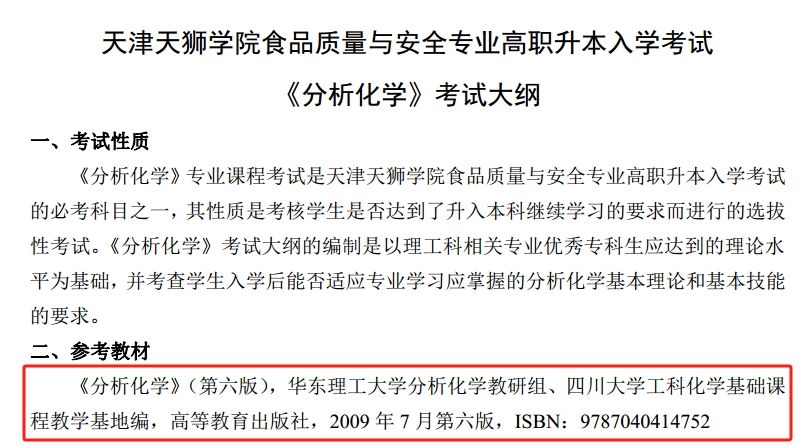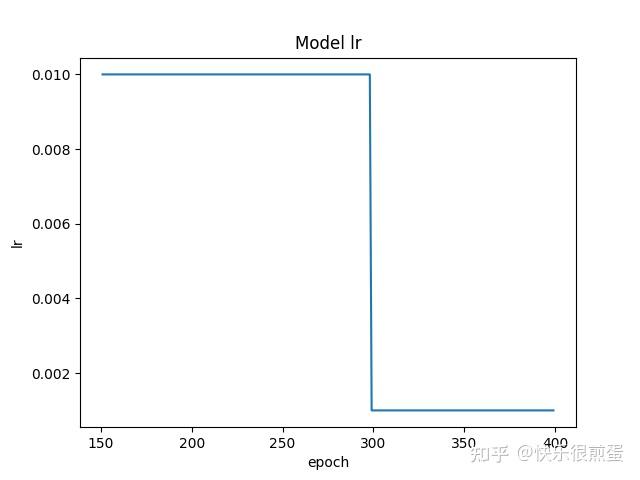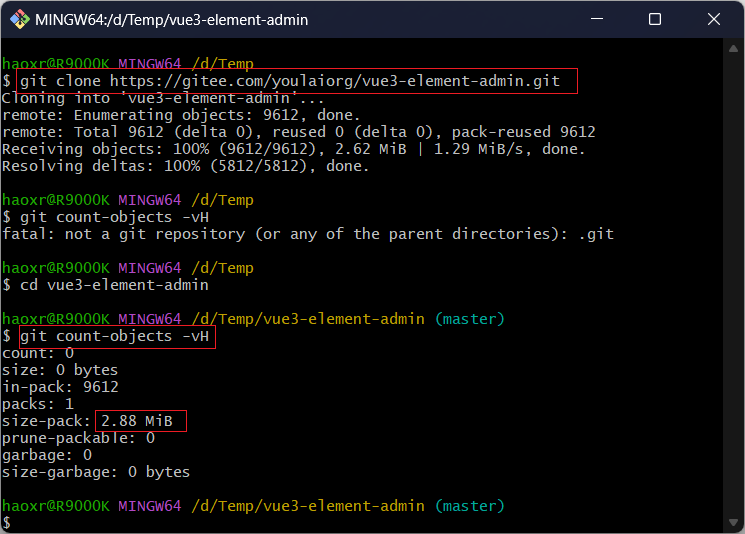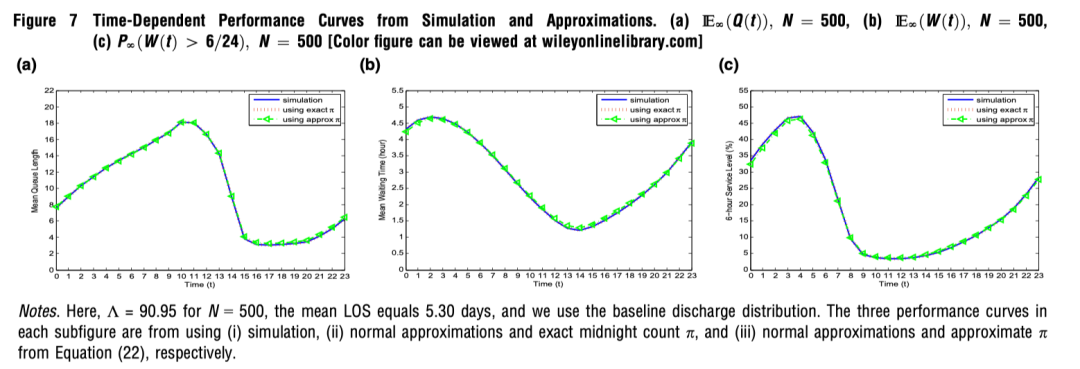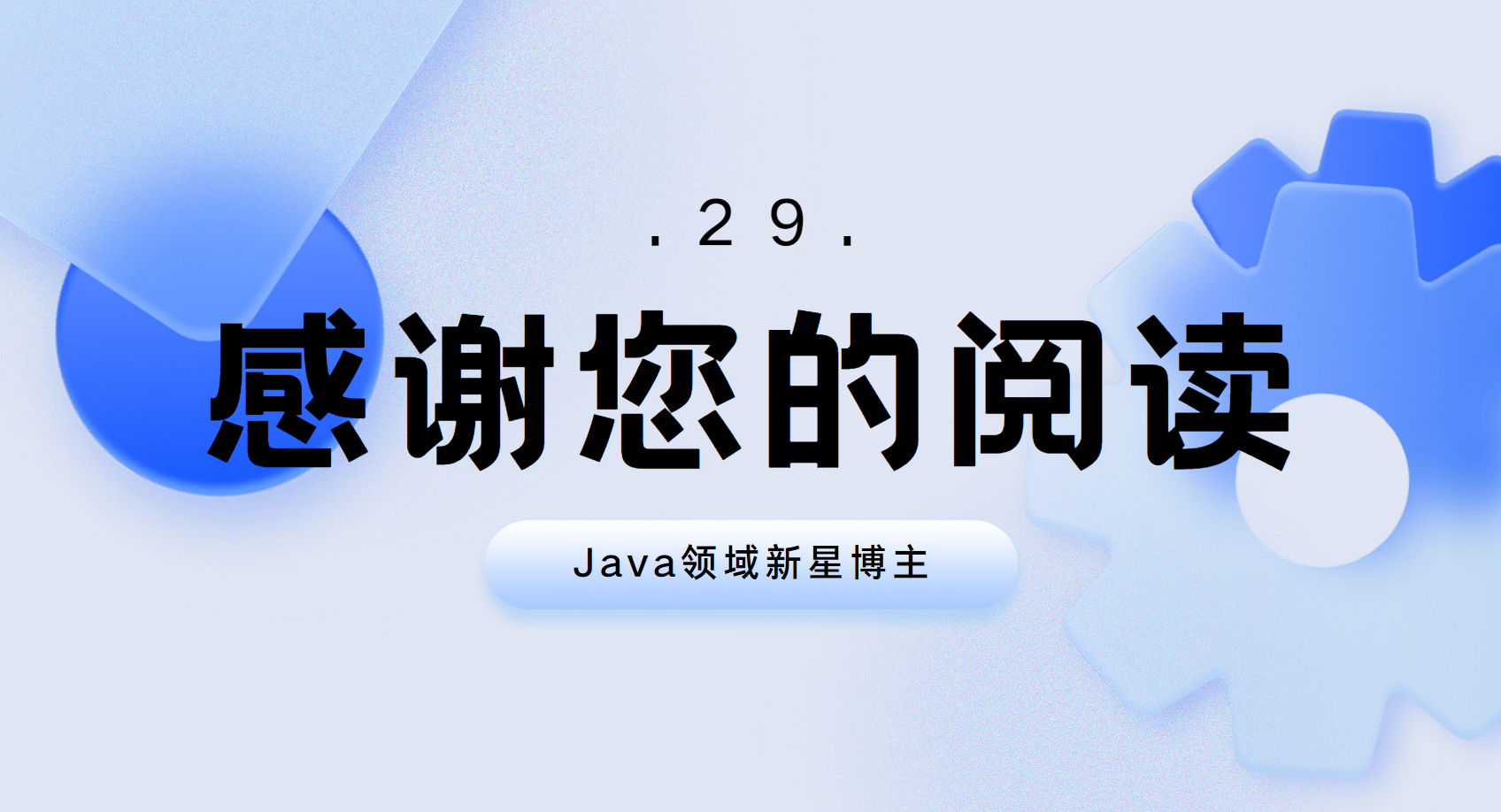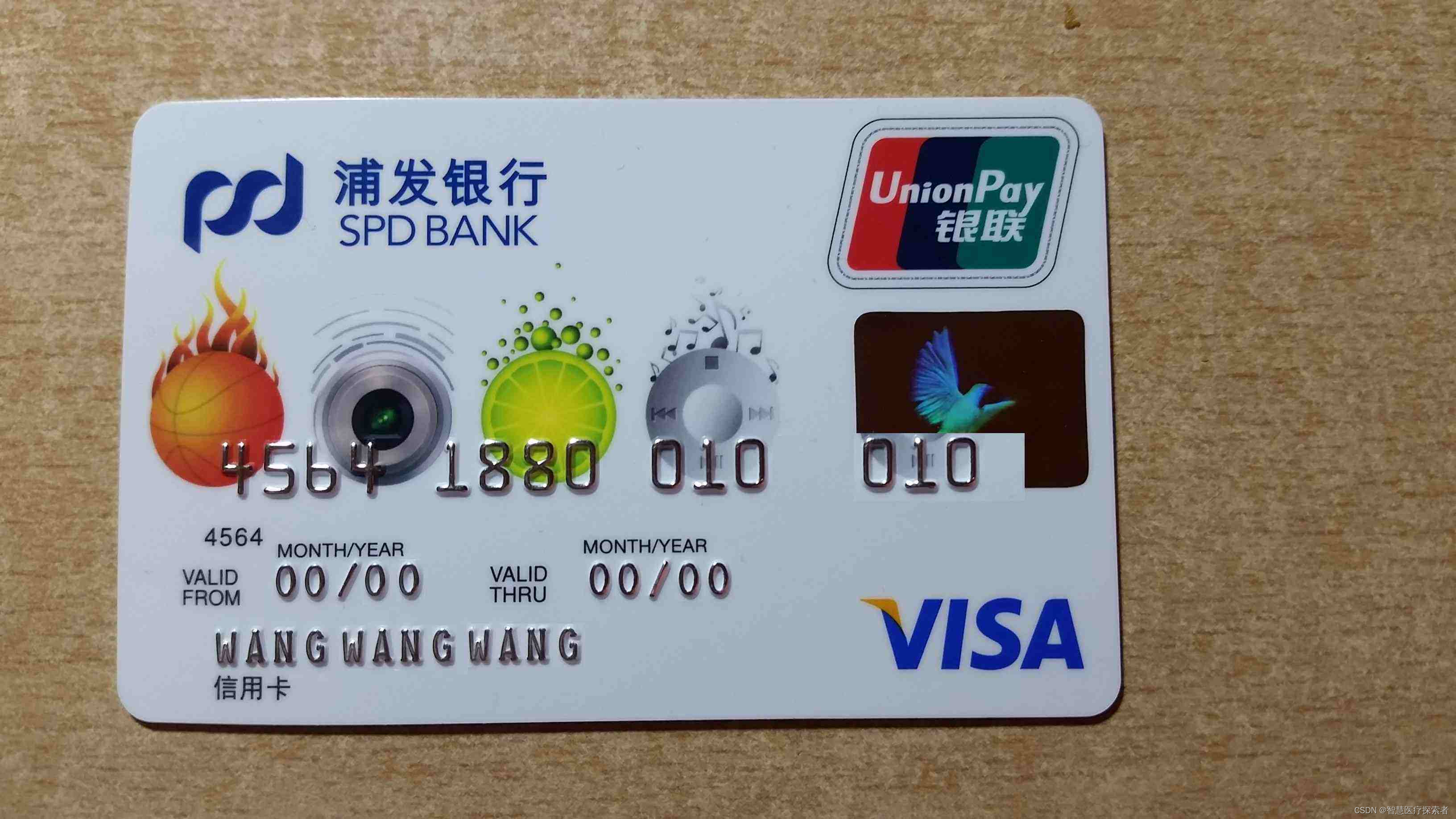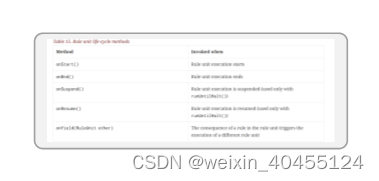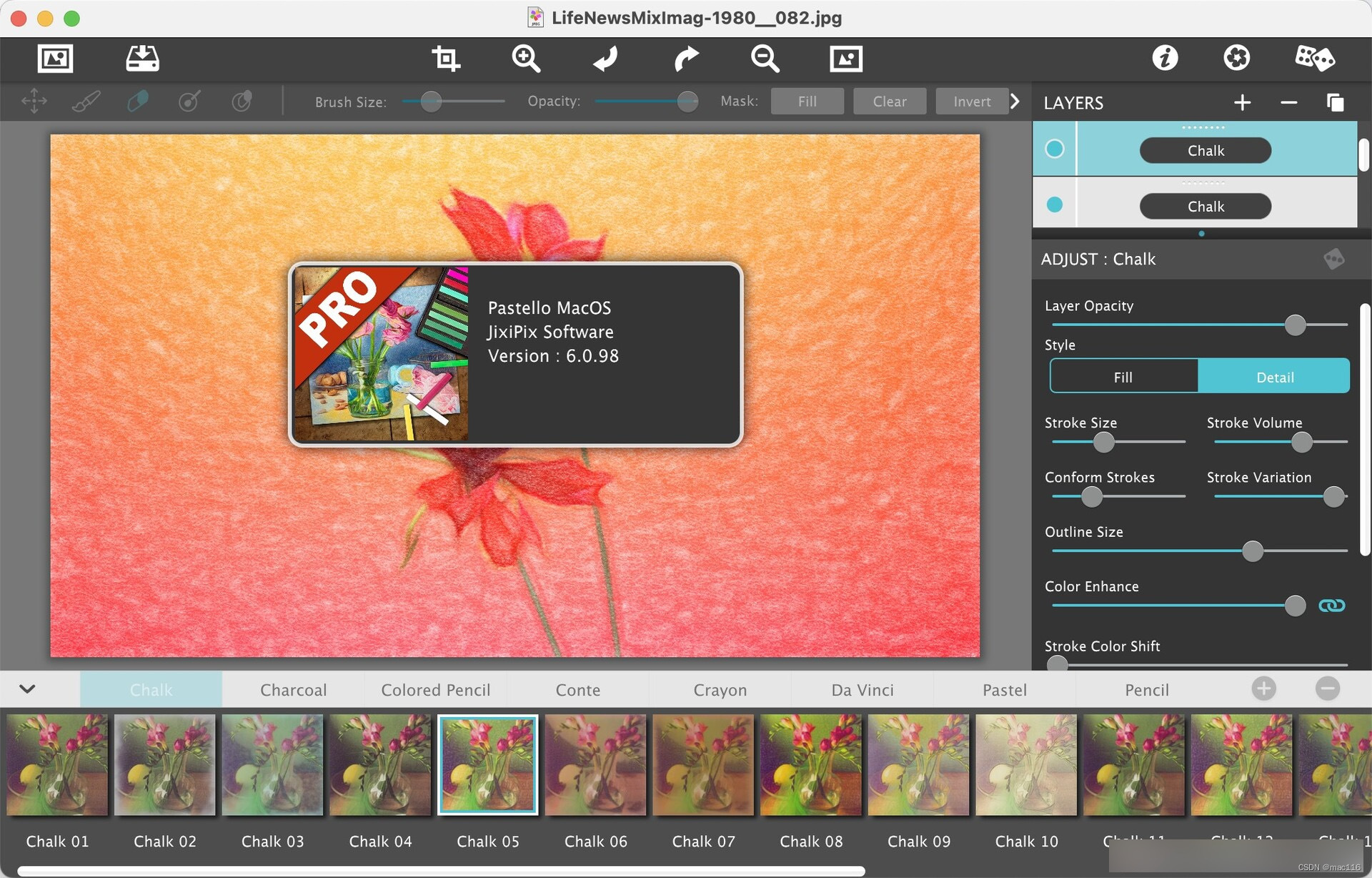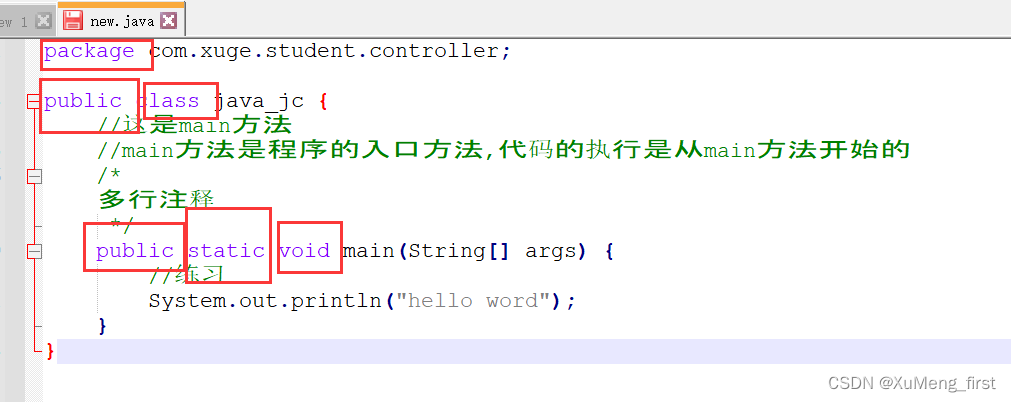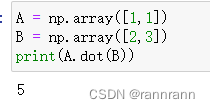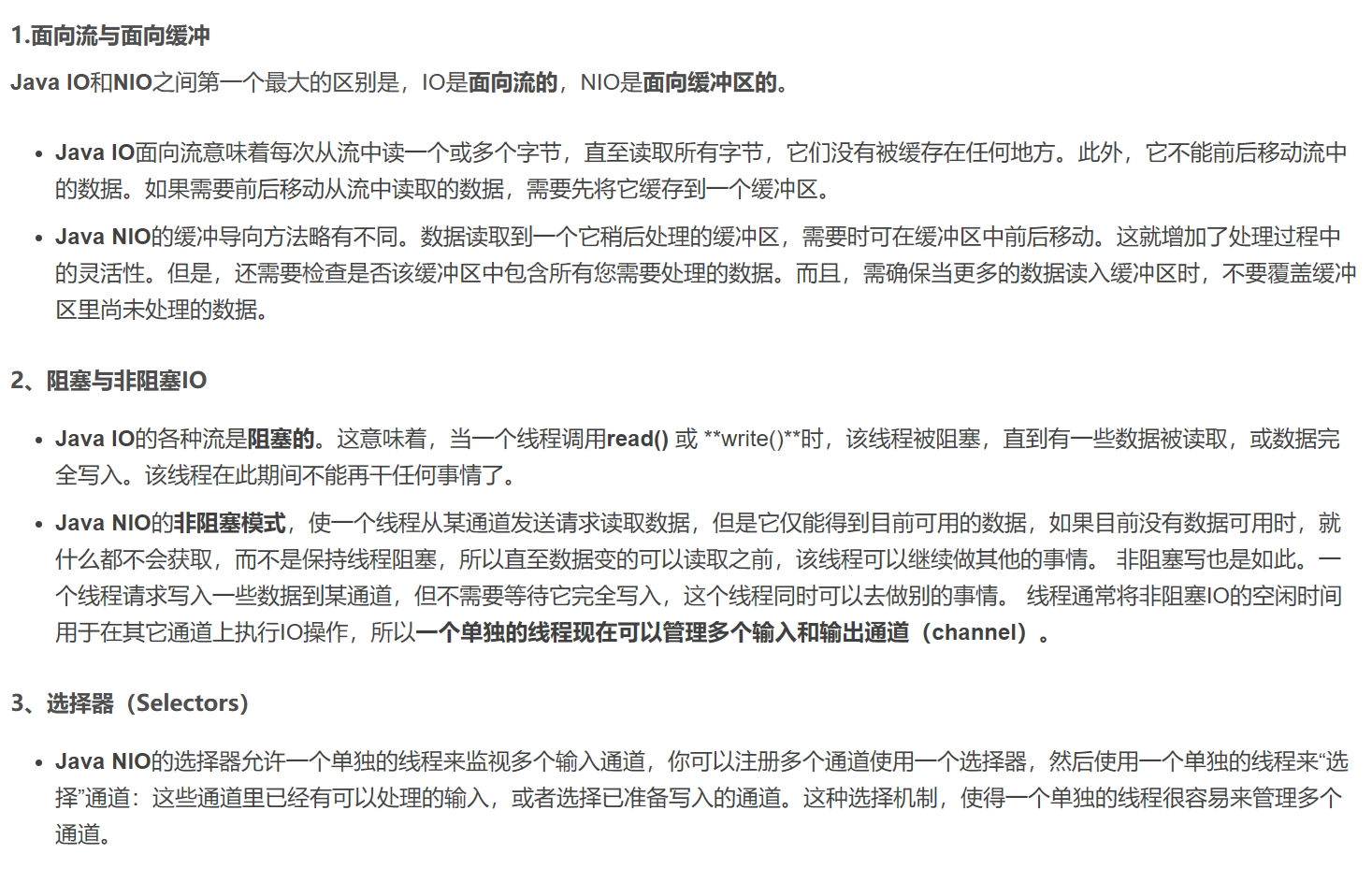目录
【1】用队列实现栈
思路分析
易错总结
Queue.c&Queue.h手撕队列
声明栈MyStack
创建&初始化栈myStackCreate
压栈myStackPush
出栈&返回栈顶元素myStackPop
返回栈顶元素myStackTop
判断栈空否myStackEmpty
释放空间myStackFree
MyStack总代码
【2】用栈实现队列
思路分析
易错总结
Stack.h&Stack.c手撕栈
声明队列MyQueue
创建&初始化队列myQueueCreate
入队列myQueuePush
返回队头元素myQueuePeek
出队列&返回队头元素myQueuePop
判断队列空否myQueueEmpty
释放空间myQueueFree
MyQueue总代码
昨天导游考试考完啦!!希望明年是导游小唐!!🙂当然,代码我们不能忘敲代码!!
【1】用队列实现栈
请你仅使用两个队列实现一个后入先出(LIFO)的栈,并支持普通栈的全部四种操作(
push、top、pop和empty)。实现
MyStack类:
void push(int x)将元素 x 压入栈顶。int pop()移除并返回栈顶元素。int top()返回栈顶元素。boolean empty()如果栈是空的,返回true;否则,返回false。

思路分析 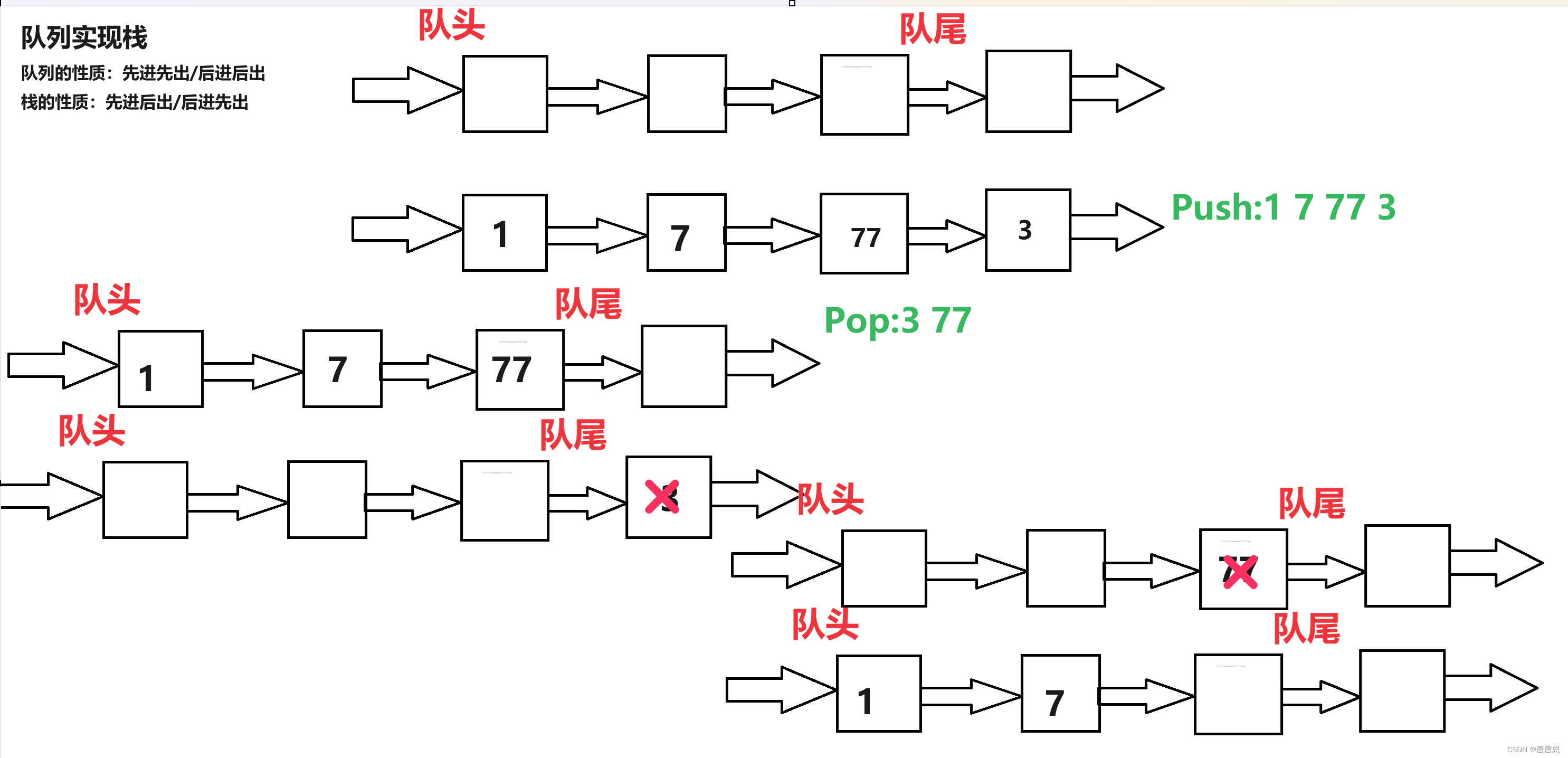

- 压栈:把元素放到不为空的队列里面。(两者若都为空随便放一个)
- 出栈:把不为空的队列里面元素>1,全部导入另外一个为空队列里面,Pop最后元素。
易错总结
- 创建的临时变量出了作用域就销毁了,所以需要malloc才可。
- 类型匹配的问题
- 假设法的使用
- 销毁的时候要先销毁队列开辟的空间,不然会造成野指针。
- 匿名结构体
- 耦合性
- -> 优先级高于&
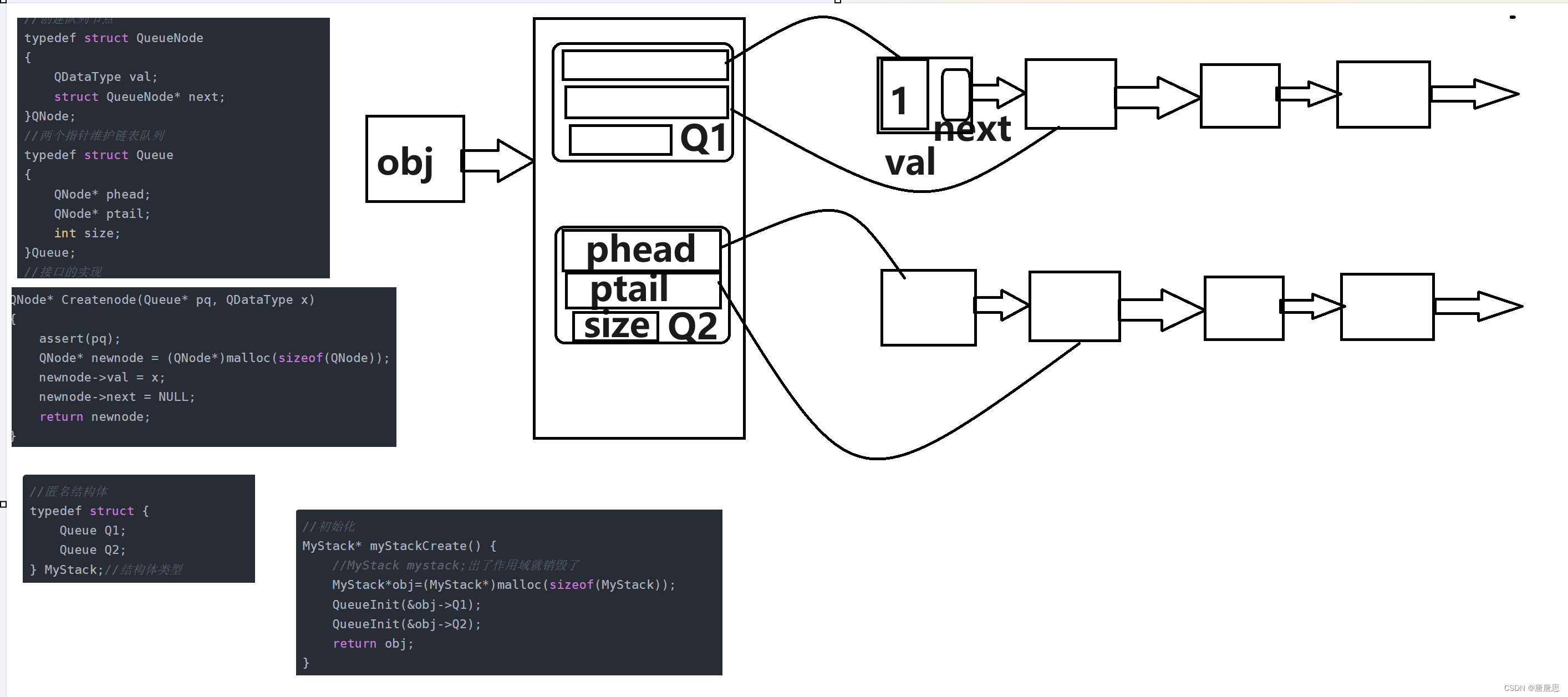
Queue.c&Queue.h手撕队列
#include<stdio.h>
#include<stdlib.h>
#include<stdbool.h>
#include<assert.h>
typedef int QDataType;
//创建队列节点
typedef struct QueueNode
{
QDataType val;
struct QueueNode* next;
}QNode;
//两个指针维护链表队列
typedef struct Queue
{
QNode* phead;
QNode* ptail;
int size;
}Queue;
//接口的实现
void QueueInit(Queue* pq);//初始化
void QueueDestroy(Queue* pq);//空间释放
void QueuePush(Queue* pq, QDataType x);//放元素到队列尾
void QueuePop(Queue* pq);//出元素到队头
QDataType QueueFront(Queue* pq);//队列头的元素
QDataType QueueBack(Queue* pq);//队列尾的元素
bool QueueEmpty(Queue* pq);//判断队列是否是否为NULL
int QueueSize(Queue* pq);//队列里面的元素个数
//不需要头节点,初始化
void QueueInit(Queue* pq)
{
assert(pq);
pq->phead = NULL;
pq->ptail = NULL;
pq->size = 0;
}
QNode* Createnode(Queue* pq, QDataType x)
{
assert(pq);
QNode* newnode = (QNode*)malloc(sizeof(QNode));
newnode->val = x;
newnode->next = NULL;
return newnode;
}
//Push元素
void QueuePush(Queue* pq, QDataType x)
{
assert(pq);
//创建节点
QNode* newnode = Createnode(pq,x);
if (pq->phead == NULL)
{
pq->phead = pq->ptail = newnode;
}
else
{
pq->ptail->next = newnode;
pq->ptail = newnode;
}
pq->size++;
}
//Pop元素
void QueuePop(Queue* pq)
{
assert(pq);
assert(pq->phead);//为NULL的判断
QNode* cur = pq->phead;
pq->phead = pq->phead->next;
free(cur);
cur = NULL;
//为一个节点的判断
if (pq->phead == NULL)
{
pq->ptail = NULL;
}
pq->size--;
}
//队头元素
QDataType QueueFront(Queue* pq)
{
assert(pq);
assert(pq->phead);
return pq->phead->val;
}
//队尾元素
QDataType QueueBack(Queue* pq)
{
assert(pq);
assert(pq->ptail);
return pq->ptail->val;
}
//判断是否为NULL
bool QueueEmpty(Queue* pq)
{
assert(pq);
return pq->phead == NULL;//return pq->size == 0
}
//队员元素个数
int QueueSize(Queue* pq)
{
assert(pq);
return pq->size;
}
//空间释放
void QueueDestroy(Queue* pq)
{
assert(pq);
while (pq->phead)
{
QNode* cur = pq->phead;
pq->phead = pq->phead->next;
free(cur);
cur = NULL;
}
pq->phead = NULL;
pq->ptail = NULL;
pq->size = 0;
}在之前的博文里面,我们详细的阐述了单链表实现【队列】的实现。这里就不在过多解释了。这里我们来用【两个队列】实现一个【栈】🆗!
声明栈MyStack
//匿名结构体
typedef struct {
Queue Q1;
Queue Q2;
} MyStack;//结构体类型
//一级指针修改结构体变量
struct {
Queue Q1;
Queue Q2;
} MyStack;//结构体变量创建&初始化栈myStackCreate
//初始化
MyStack* myStackCreate() {
//MyStack mystack;出了作用域就销毁了
MyStack*obj=(MyStack*)malloc(sizeof(MyStack));
QueueInit(&obj->Q1);
QueueInit(&obj->Q2);
return obj;
}压栈myStackPush
//放元素
void myStackPush(MyStack* obj, int x) {
assert(obj);
//找不为NULL的队列依次插入
if(!QueueEmpty(&obj->Q1))//!=0
{
QueuePush(&obj->Q1, x);//尾插
}
else//== 0
{
QueuePush(&obj->Q2, x);
}
//两个==0 随便进一个
}出栈&返回栈顶元素myStackPop
//出元素
int myStackPop(MyStack* obj) {
assert(obj);
//判断为空/非空------假设法
Queue*nonempty=&obj->Q1;
Queue*empty=&obj->Q2;
if(QueueEmpty(&obj->Q1))//==0true与上面逻辑相反//出了作用域就销毁了姐姐❌
{
nonempty=&obj->Q2;
empty=&obj->Q1;//创建
}
while(QueueSize(nonempty)>1)//队列里面的元素个数 > 1
{
int x = QueueFront(nonempty);//队列头的元素
QueuePush(empty, x);//放元素到队列尾
QueuePop(nonempty);//出元素到队头
}
int Back=QueueFront(nonempty);//队列尾的元素
QueuePop(nonempty);
return Back;
}返回栈顶元素myStackTop
//栈顶元素
int myStackTop(MyStack* obj) {
if(!QueueEmpty(&obj->Q1))
{
return QueueBack(&obj->Q1);
}
else
{
return QueueBack(&obj->Q2);
}
}判断栈空否myStackEmpty
//判空
bool myStackEmpty(MyStack* obj) {
return QueueEmpty(&obj->Q1) && QueueEmpty(&obj->Q2);//&&
}释放空间myStackFree
void myStackFree(MyStack* obj) {
QueueDestroy(&obj->Q1);
QueueDestroy(&obj->Q2);
free(obj);
obj=NULL;
}MyStack总代码
typedef struct {
Queue Q1;
Queue Q2;
} MyStack;
//一级指针修改结构体变量
//初始化
MyStack* myStackCreate() {
//MyStack mystack;出了作用域就销毁了
MyStack*obj=(MyStack*)malloc(sizeof(MyStack));
QueueInit(&obj->Q1);
QueueInit(&obj->Q2);
return obj;
}
//放元素
void myStackPush(MyStack* obj, int x) {
assert(obj);
//找不为NULL的队列依次插入
if(!QueueEmpty(&obj->Q1))//!=0
{
QueuePush(&obj->Q1, x);//尾插
}
else//== 0
{
QueuePush(&obj->Q2, x);
}
//两个==0 随便进一个
}
//出元素
int myStackPop(MyStack* obj) {
assert(obj);
//判断为空/非空------假设法
Queue*nonempty=&obj->Q1;
Queue*empty=&obj->Q2;
if(QueueEmpty(&obj->Q1)
{
nonempty=&obj->Q2;
empty=&obj->Q1;//创建
}
while(QueueSize(nonempty)>1)//队列里面的元素个数 > 1
{
int x = QueueFront(nonempty);//队列头的元素
QueuePush(empty, x);//放元素到队列尾
QueuePop(nonempty);//出元素到队头
}
int Back=QueueFront(nonempty);//队列尾的元素
QueuePop(nonempty);
return Back;
}
//栈顶元素
int myStackTop(MyStack* obj) {
if(!QueueEmpty(&obj->Q1))
{
return QueueBack(&obj->Q1);
}
else
{
return QueueBack(&obj->Q2);
}
}
//判空
bool myStackEmpty(MyStack* obj) {
return QueueEmpty(&obj->Q1) && QueueEmpty(&obj->Q2);//&&
}
void myStackFree(MyStack* obj) {
QueueDestroy(&obj->Q1);
QueueDestroy(&obj->Q2);
free(obj);
obj=NULL;
}【2】用栈实现队列
请你仅使用两个栈实现先入先出队列。队列应当支持一般队列支持的所有操作(
push、pop、peek、empty):实现
MyQueue类:
void push(int x)将元素 x 推到队列的末尾int pop()从队列的开头移除并返回元素int peek()返回队列开头的元素boolean empty()如果队列为空,返回true;否则,返回false
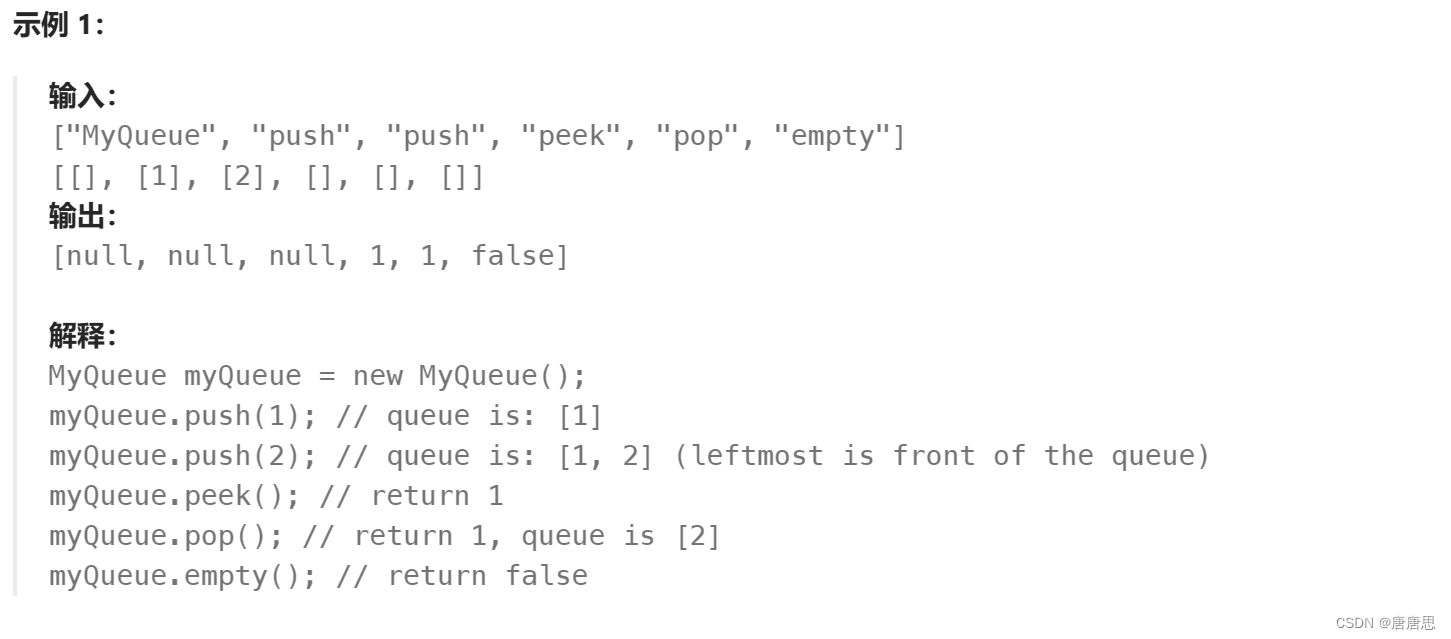
思路分析

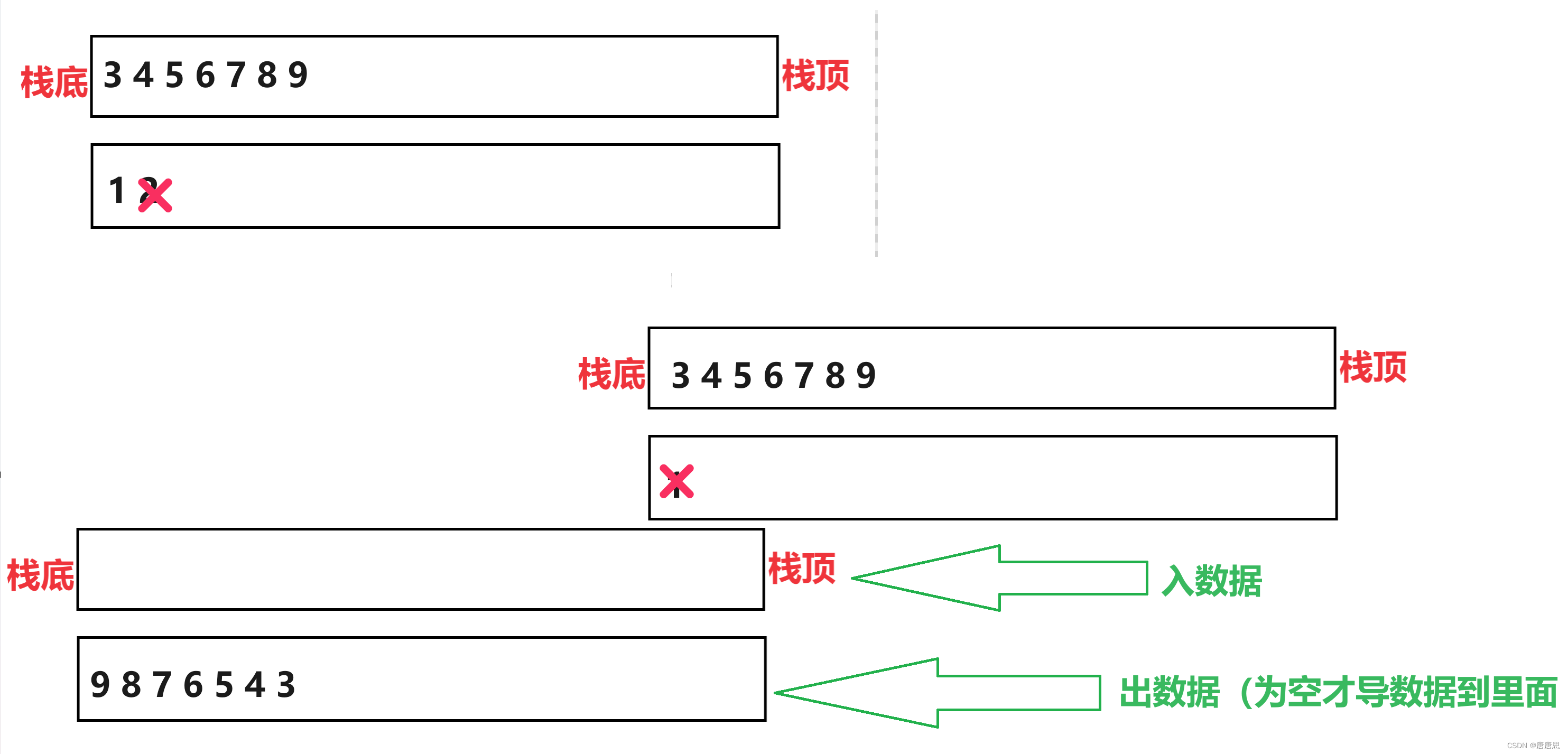
- 一个栈S1用来专门入数据Push
- 另外一个栈S2用来专门出数据Pop(S2为空的时候才能把S1的数据导入S2 直到S1为空)
- S2不为空的时候直接出数据即可
- 队列出数据的顺序性质 == 栈导入另外一个栈出数据的顺序
易错总结
- 创建的临时变量出了作用域就销毁了,所以需要malloc才可。
- 类型匹配的问题
- 销毁的时候要先销毁队列开辟的空间,不然会造成野指针。
- 匿名结构体
- 耦合性
- -> 优先级高于&
- !STempty(&obj->stackpush))//!=0 flase---true开始导 直到==0 true
- 结构体和结构体指针
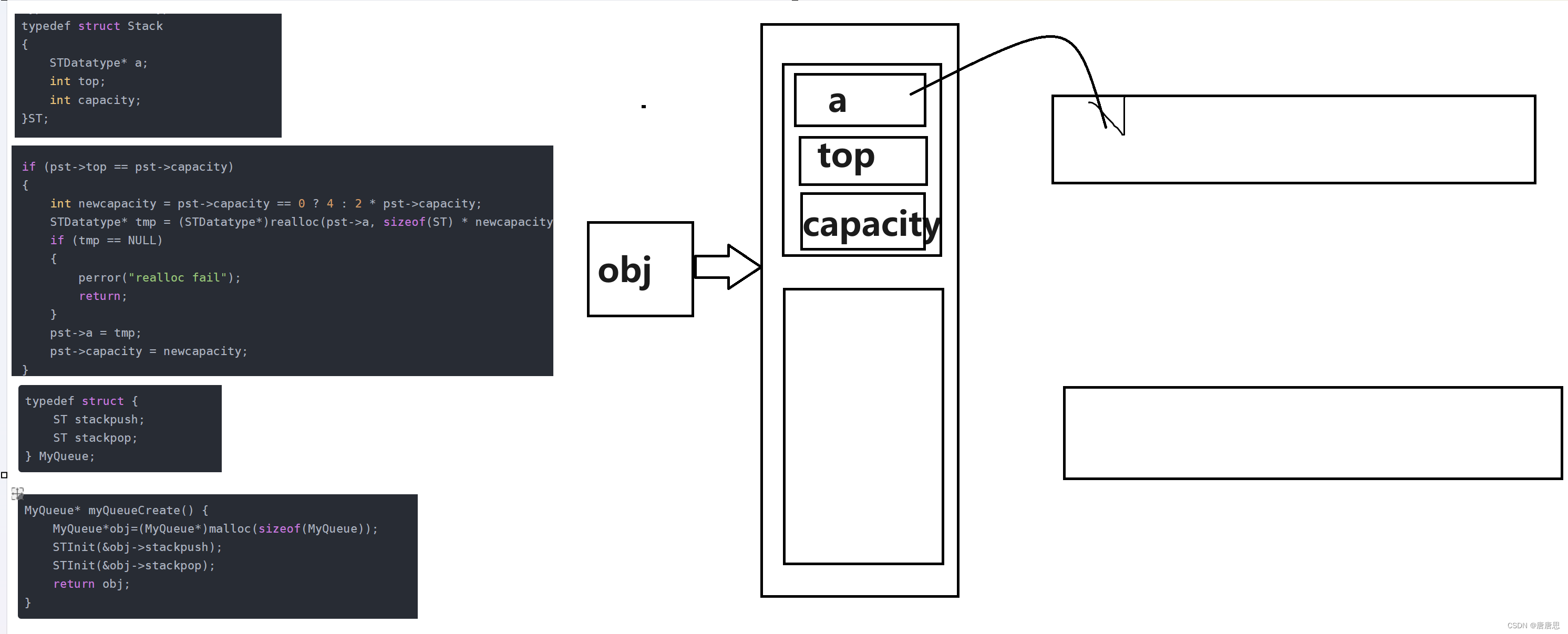
Stack.h&Stack.c手撕栈
#include<stdio.h>
#include<assert.h>
#include<stdlib.h>
#include<stdbool.h>
typedef int STDatatype;
typedef struct Stack
{
STDatatype* a;
int top;
int capacity;
}ST;
void STInit(ST* pst);
void STDestroy(ST* pst);
void STPush(ST* pst, STDatatype x);
void STPop(ST* pst);
STDatatype STTop(ST* pst);
bool STempty(ST* pst);
int STSize(ST* pst);
void STInit(ST* pst)
{
assert(pst);
pst->a = 0;
pst->top = 0;
pst->capacity = 0;
}
void Createcapacity(ST* pst)
{
if (pst->top == pst->capacity)
{
int newcapacity = pst->capacity == 0 ? 4 : 2 * pst->capacity;
STDatatype* tmp = (STDatatype*)realloc(pst->a, sizeof(ST) * newcapacity);
if (tmp == NULL)
{
perror("realloc fail");
return;
}
pst->a = tmp;
pst->capacity = newcapacity;
}
}
void STPush(ST* pst, STDatatype x)
{
assert(pst);
Createcapacity(pst);
pst->a[pst->top] = x;
pst->top++;
}
void STPop(ST* pst)
{
assert(pst);
assert(pst->top > 0);
pst->top--;
}
STDatatype STTop(ST* pst)
{
assert(pst);
assert(pst->top > 0);
return pst->a[pst->top-1];
}
bool STempty(ST* pst)
{
assert(pst);
return pst->top == 0;
}
int STSize(ST* pst)
{
assert(pst);
return pst->top;
}
void STDestroy(ST* pst)
{
assert(pst);
free(pst->a);
pst->a = NULL;
pst->top = 0;
pst->capacity = 0;
}同样我们之前用数组实现了【栈】,这里我们在来用两个栈实现【队列】 。
声明队列MyQueue
typedef struct {
ST stackpush;
ST stackpop;
} MyQueue;创建&初始化队列myQueueCreate
MyQueue* myQueueCreate() {
MyQueue*obj=(MyQueue*)malloc(sizeof(MyQueue));
STInit(&obj->stackpush);
STInit(&obj->stackpop);
return obj;
}入队列myQueuePush
//入队列
void myQueuePush(MyQueue* obj, int x) {
STPush(&obj->stackpush, x);
}返回队头元素myQueuePeek
//取出队列的数据 --所以可以先实现这个
int myQueuePeek(MyQueue* obj) {
if(STempty(&obj->stackpop))//==0 true为空导数据
{
while(!STempty(&obj->stackpush))//!=0//!=0 flase---true开始导 直到==0 true ---false
{
int x=STTop(&obj->stackpush);
STPush(&obj->stackpop,x);
STPop(&obj->stackpush);
}
}
return STTop(&obj->stackpop);
}出队列&返回队头元素myQueuePop
//出队列 为NULL就导数据/出队列 不为NULL出队列
int myQueuePop(MyQueue* obj) {
int back=myQueuePeek(obj);
STPop(&obj->stackpop);
return back;
}
判断队列空否myQueueEmpty
bool myQueueEmpty(MyQueue* obj) {
return STempty(&obj->stackpush) && STempty(&obj->stackpop);
}释放空间myQueueFree
void myQueueFree(MyQueue* obj) {
STDestroy(&obj->stackpush);
STDestroy(&obj->stackpop);
free(obj);
obj=NULL;
}MyQueue总代码
typedef struct {
ST stackpush;
ST stackpop;
} MyQueue;
MyQueue* myQueueCreate() {
MyQueue*obj=(MyQueue*)malloc(sizeof(MyQueue));
STInit(&obj->stackpush);
STInit(&obj->stackpop);
return obj;
}
//入队列
void myQueuePush(MyQueue* obj, int x) {
STPush(&obj->stackpush, x);
}
//取出队列的数据 --所以可以先实现这个
int myQueuePeek(MyQueue* obj) {
if(STempty(&obj->stackpop))//==0 true为空导数据
{
while(!STempty(&obj->stackpush))//!=0//!=0 flase---true开始导 直到==0 true ---false
{
int x=STTop(&obj->stackpush);
STPush(&obj->stackpop,x);
STPop(&obj->stackpush);
}
}
return STTop(&obj->stackpop);
}
//出队列 为NULL就导数据/出队列 不为NULL出队列
int myQueuePop(MyQueue* obj) {
int back=myQueuePeek(obj);
STPop(&obj->stackpop);
return back;
}
//
bool myQueueEmpty(MyQueue* obj) {
return STempty(&obj->stackpush) && STempty(&obj->stackpop);
}
void myQueueFree(MyQueue* obj) {
STDestroy(&obj->stackpush);
STDestroy(&obj->stackpop);
free(obj);
obj=NULL;
}- 不要对比代码!怎么想怎么写!
- 调试很重要!调式:按照自己预期的去走读代码(最后上编译器)
- 编译出错:运行的问题
- 执行错误:逻辑的问题
✔✔✔✔✔最后,感谢大家的阅读,若有错误和不足,欢迎指正!
【数组栈】实现-CSDN博客
单链表实现【队列】-CSDN博客
